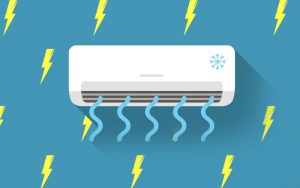Have you ever wondered why some homes feel like they’re submerged in an arctic chill while others are as snug as a bug in a rug? The secret lies within the walls, quite literally. By harnessing the power of spray foam insulation, you can turn your home from frigid fortress to cozy castle with just one application. Contact a professional insulation contractor in Minneapolis today and start enjoying the benefits of spray foam insulation in your home!It’s time to bid farewell to battling icy gusts that slip through every nook and cranny, and say hello to a sanctuary where warmth is never compromised and comfort reigns supreme.
The Benefits of Spray Foam Insulation
Spray foam insulation is quickly becoming one of the most popular choices for homeowners looking to improve their homes’ energy efficiency. One of the major benefits is its unparalleled ability to seal and insulate even the tightest spaces. Unlike traditional insulation materials like fiberglass or cellulose, spray foam expands after being applied, filling cracks and gaps in walls, ceilings, and floors that might otherwise go unnoticed. This means fewer drafts and more consistent temperature control throughout your home.
Another advantage of spray foam insulation is its superior air sealing capabilities. Not only does it seal off cracks and gaps but it also forms a continuous barrier that prevents air infiltration from outside sources. This can greatly reduce the amount of allergens, pollutants, and external noise that enter your home. Additionally, by preventing air leakage, spray foam insulation helps keep conditioned air inside your home longer, reducing both heating and cooling costs.
Choosing the Right Type of Spray Foam Insulation
When it comes to choosing the right type of spray foam insulation for your home, it’s important to understand the two main options: open-cell and closed-cell. Open-cell spray foam is known for its affordability and flexibility, making it a popular choice for many homeowners. This type of insulation expands upon application to fill large gaps and provide an effective air barrier. On the other hand, closed-cell spray foam is denser and provides a higher R-value per inch, making it ideal for areas that require greater insulation efficiency.
While open-cell foam may seem like the more cost-effective choice at first glance, it’s essential to consider factors such as long-term energy savings and durability. Closed-cell spray foam not only provides better thermal resistance but also acts as a moisture barrier, preventing mold growth and water damage in your home. Additionally, closed-cell foam has been shown to strengthen the structure of buildings due to its rigidity. It’s always recommended to consult with a professional insulation contractor who can assess your specific needs and advise you on the best option for your project. By considering factors such as budget, climate conditions, and desired level of insulation performance, you can make an informed decision that will ensure a comfortable and energy-efficient home for years to come.
The Process of Installing Spray Foam Insulation
Installing spray foam insulation is a complex and meticulous process that requires the right equipment, materials, and expertise. It begins with thorough preparation of the area to be insulated, ensuring that all surfaces are clean and free of debris. Next, the foam gun is loaded with two separate components – a polyol resin and an isocyanate hardener. When these two substances mix, they undergo a chemical reaction that causes them to expand and form a solid mass.
As the foam is sprayed onto the chosen surface, it quickly expands to fill any gaps or cracks. This expansion allows for an airtight seal, effectively blocking out drafts and preventing heat loss. However, because of this rapid expansion rate, installers must work efficiently to ensure smooth application without any structural distortions or bulges. One crucial aspect of installing spray foam insulation is understanding how much material to use in each area. Too little foam might result in incomplete coverage and reduced insulating properties; conversely, using too much can lead to unnecessary costs while not providing any additional benefits. Installers must have keen judgment when determining the appropriate amount of spray foam required for a specific project.
Transforming Your Home: Before and After
When it comes to transforming your home, the impact of before and after photos can be truly astonishing. One area where homeowners often see a dramatic difference is in their energy efficiency and overall comfort levels after installing spray foam insulation. Before, drafty windows and chilly rooms may have been the norm, but with the addition of this powerful insulation material, your home can become a cozy retreat.
One homeowner who recently underwent this transformation shared that before installing spray foam insulation, they would experience significant drafts around their windows during colder months. However, once the foam was applied, they were amazed by how much warmer their home felt and how much quieter it became. The improved air seal provided by spray foam insulation made a noticeable difference in reducing cold spots and eliminating drafts. Another surprising benefit of spray foam insulation is its ability to improve indoor air quality. Unlike traditional insulation materials that can trap moisture or create an environment for mold growth, spray foam acts as an effective barrier against these issues. By creating an airtight seal along walls and in attics or crawl spaces, it helps prevent allergens from entering your home while also improving humidity control.
Additional Considerations for Spray Foam Insulation
When considering spray foam insulation, it is important to take into account any potential health concerns. While spray foam insulation is generally safe when installed correctly, some individuals may be sensitive or allergic to the chemicals used in the installation process. It is recommended to consult with a professional contractor who specializes in spray foam insulation and can address any specific health concerns you may have. Additionally, it is crucial to properly ventilate your home during and after installation to allow any lingering odors or fumes to dissipate.
Another key consideration for spray foam insulation is the impact on your home’s indoor air quality. When properly applied and sealed, spray foam can effectively block out allergens, dust, and pollutants that can negatively affect indoor air quality. This can be especially beneficial for individuals with respiratory conditions such as asthma or allergies. However, it is essential to ensure that the installation is done correctly to avoid any gaps or cracks where outside air could enter, potentially compromising indoor air quality. Lastly, before opting for spray foam insulation, it’s important to evaluate its compatibility with existing building materials in your home. Spray foam expands once applied but hardens quickly into a solid material. This expansion can exert pressure on walls and other surfaces if not carefully managed. Therefore, it’s essential to work with an experienced contractor who understands how different building materials interact with spray foam insulation and can recommend appropriate installation methods for your specific situation.
Conclusion: Enjoy the Comfort and Savings
Spray foam insulation is not only a game-changer when it comes to transforming your home, but also when it comes to enjoying the comfort and savings it brings. After installing spray foam insulation, you’ll immediately notice a difference in how cozy your home feels. Gone are the days of drafty rooms and chilly corners; instead, you’ll be greeted with an even temperature throughout your home, no matter the season. Take the first step towards a more comfortable and energy-efficient home by contacting a professional foam insulation in Plymouth today.
But it’s not just about staying warm in the winter or cool in the summer. Spray foam insulation can also lead to significant savings on your energy bills. By effectively sealing all those nooks and crannies where air leaks occur, spray foam insulation helps prevent heat loss during colder months and cold air infiltration during warmer months. Your HVAC system won’t have to work as hard to maintain a comfortable temperature, resulting in lower energy consumption and cost savings. In addition to the immediate benefits of comfort and savings, spray foam insulation also offers long-term advantages for homeowners. Its durable nature ensures that it will last for years without requiring frequent maintenance or replacement. This means fewer worries about having to re-insulate your home down the road – once you’ve made this investment, you can enjoy its benefits for a long time.
So why wait? Transforming your home with spray foam insulation not only enhances its comfort but also provides substantial energy savings. Don’t settle for drafty rooms and high utility bills any longer – make the switch today and enjoy a cozier home while keeping more money in your pocket for






Be First to Comment